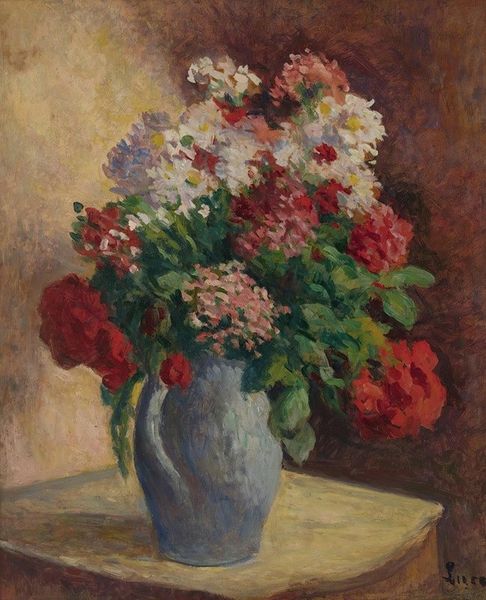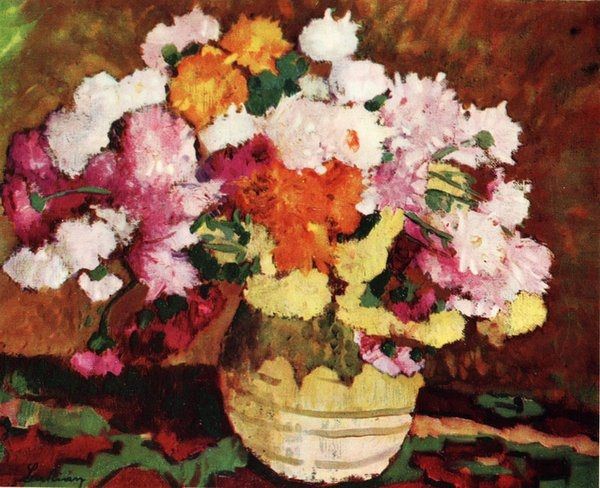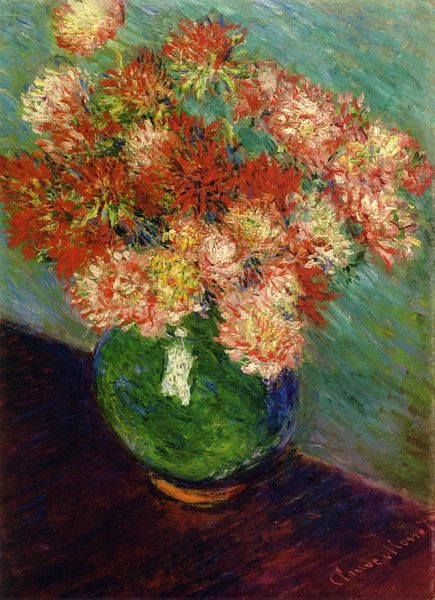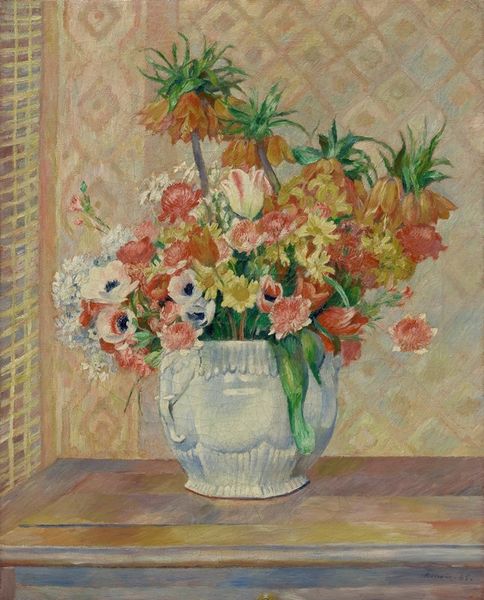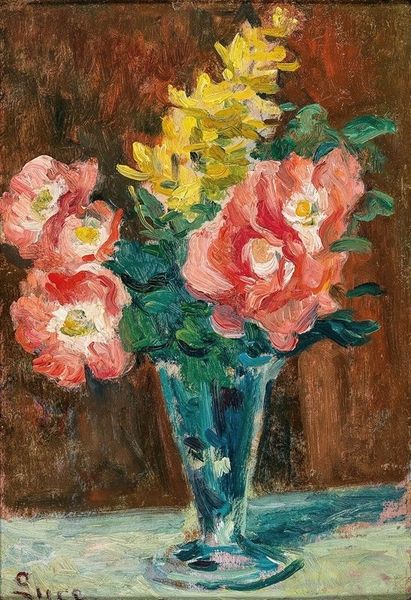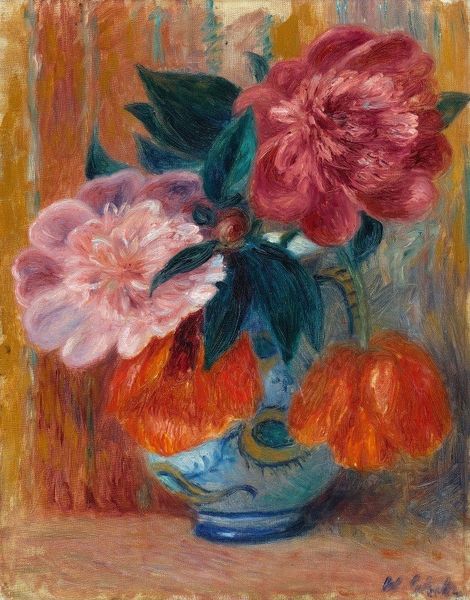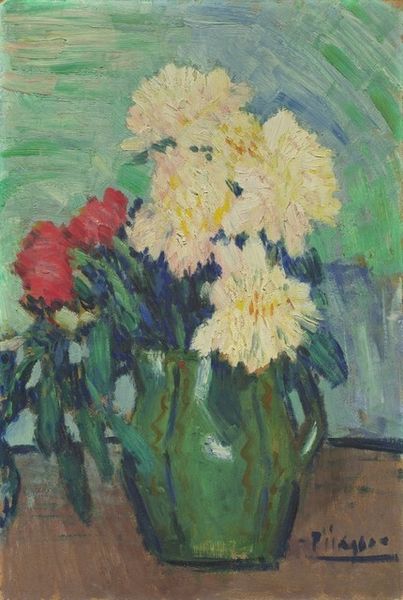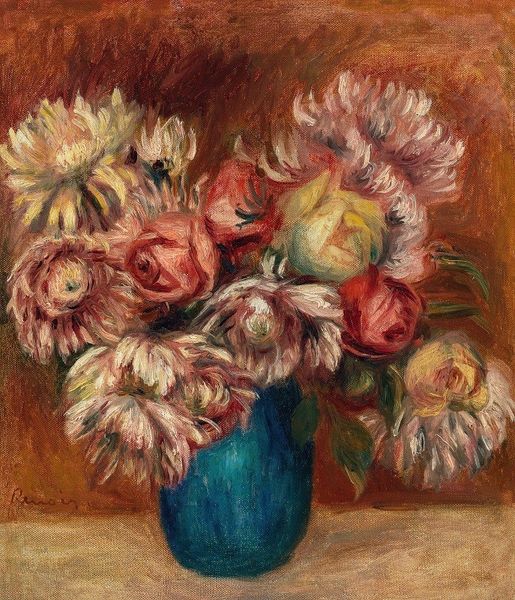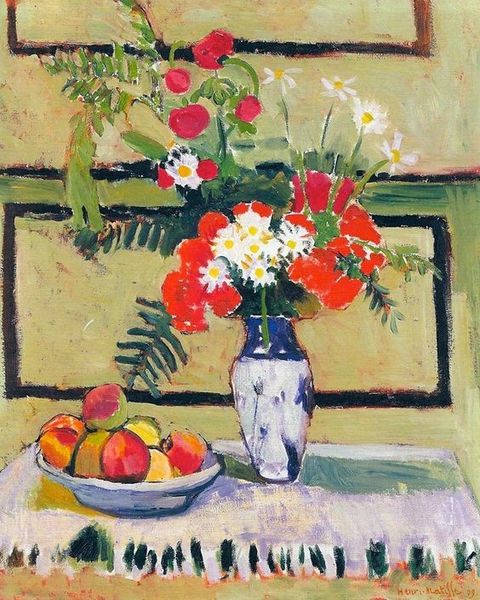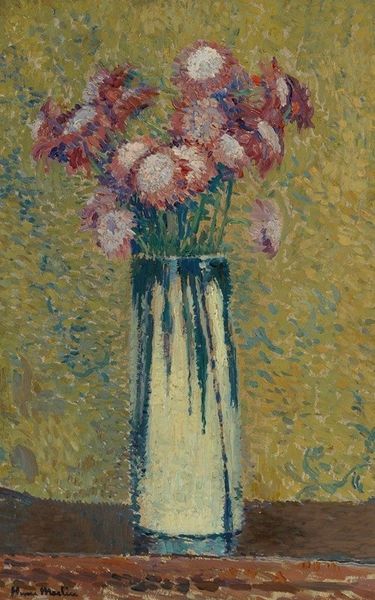
Copyright: Public domain
Editor: Theo van Rysselberghe's "Dahlias (to Mme Madeleine E.R Bonnet)," painted in 1912 using oil paints. It has such a vibrant, almost joyful feel to it. All of that combined color gives me pause: how do you interpret the cultural and historical context that shaped this still life? Curator: It’s a beautiful example of post-Impressionism stepping away from rigid academic traditions, right? Van Rysselberghe was moving away from pure Pointillism toward something more expressive. In the context of early 20th-century Europe, where societal norms and artistic boundaries were being questioned, the Dahlias – especially dedicated to a woman, Madame Bonnet – represent more than just a pretty arrangement. What could the seemingly intimate and domestic scene suggest about women in the art world at that time? Editor: Well, maybe it subtly elevates the importance of domestic life and acknowledges women's roles within that sphere? The dedication suggests a personal connection, making me wonder if Mme Bonnet was another artist or a patron of the arts. Curator: Exactly! The art world was becoming more professionalized and galleries played a crucial role in making careers for artists. Maybe Mme Bonnet was connected in this field, in a time where women found it difficult to access the same advantages that men could. The colors and light here may signal joy and new beginnings in spite of all these political matters. Notice also how he places emphasis on complementary colors. The contrast of the red flowers against the greenish backdrop create a tension within the space as he directs us through the scene. Editor: I hadn't thought about how gallery contexts affect art, or about how colour affects spatial awareness! Thanks. Curator: It just shows how the historical, social, and even the display context change the work for us. We need to bring everything with us as we visit.
Comments
No comments
Be the first to comment and join the conversation on the ultimate creative platform.
